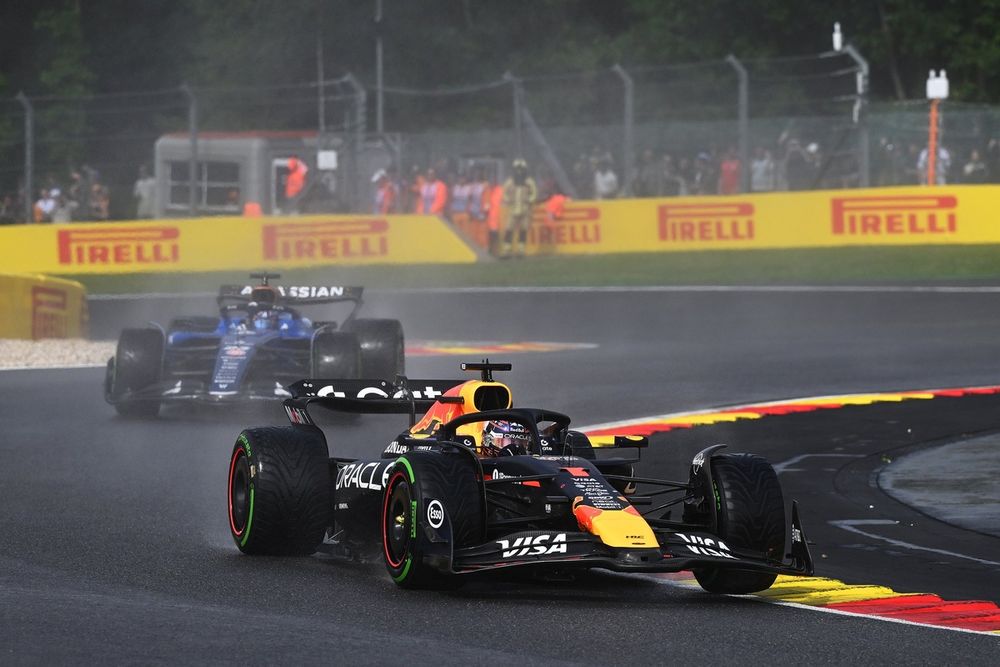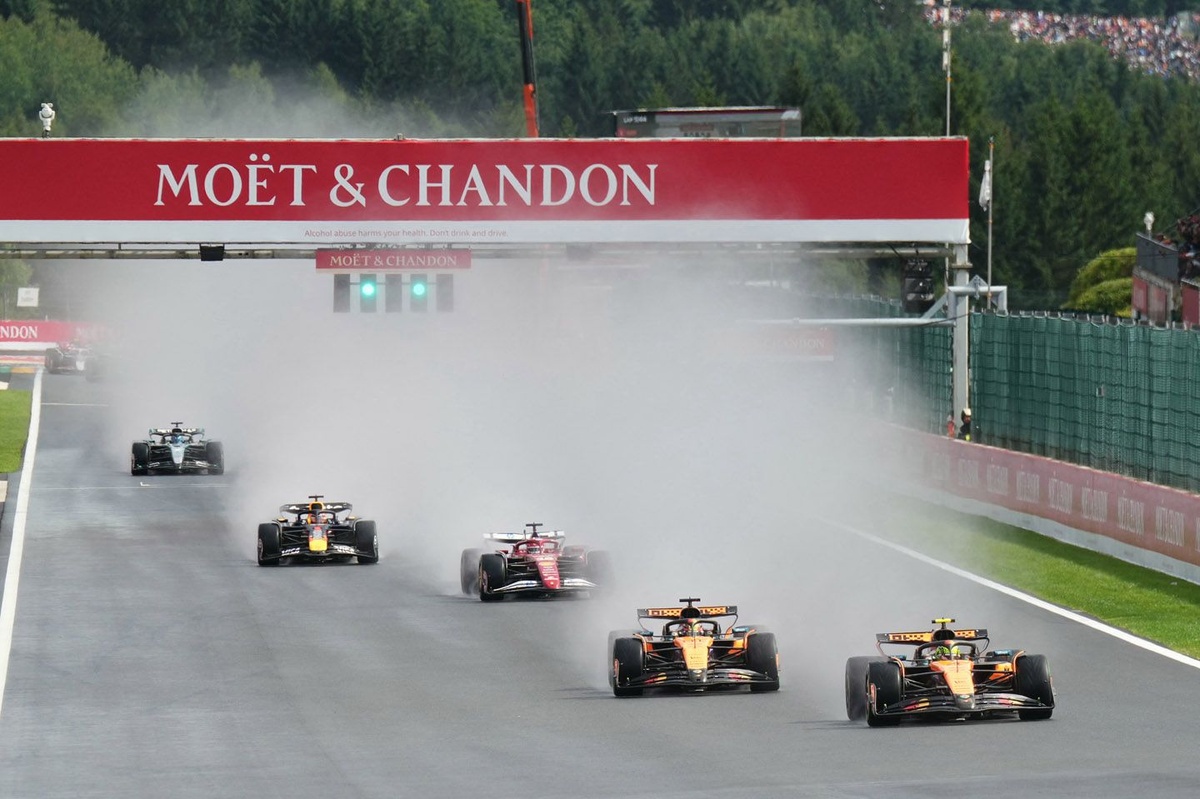Red Bull’s head of sporting regulations Stephen Knowles believes that Formula 1 has a fundamental visibility problem when racing in wet conditions. This comes after a wet start at the 2025 Belgian Grand Prix when the race was delayed by 80 minutes due to heavy rain earlier on the Sunday.
Talking on The Inside Track podcast, Knowles explained why the current-regulation cars are creating so much spray, contributing massively to the poor visibility in such conditions.
“I think with the visibility issues we have with these cars right now, they lift so much water because they’re quite big and they produce so much downforce from the floors that then suck all the water up into the air,” he said.
“We have a real problem with visibility and I don’t think that you could have changed it massively. We might have got going a bit earlier, but I don’t think it would have been a totally different story.”
Wet conditions at the Spa-Francorchamps circuit have created incredibly dangerous races in the past, with incidents taking the lives of both Anthoine Hubert and Dilano van ‘t Hoff over the past six years.
“You potentially, particularly in the wet with all the spray that we had, you could have had a number of cars approaching a car that had potentially had a spin,” Knowles continued on the 2025 race. “I don’t envy race control in that situation.”
The FIA has carried out substantial testing on addressing this spray issue, including the trialling of mudguards designed to reduce spray from the wheels. These tests failed due to the fact that the majority of the spray is instead created by the rear diffuser.

Max Verstappen, Red Bull Racing
Photo by: Sam Bagnall / Sutton Images via Getty Images
Speaking to Motorsport.com, FIA’s head of single-seater matters Nikolas Tombazis confirmed that tests on this came to an end.
“We always knew that there were two main contributing factors to the cloud of spray,” he said. “One was how much water is picked up from the ground from the diffuser, and the other one is from the wheels.
“What we thought we’d do is try to do a total wheel cover, even beyond what would be practical, to see what is the maximum we can possibly achieve with that – in order to see whether that is the solution or not.
“The previous wheel cover test [at Silverstone last year] was way, way too flimsy and too small. And therefore I don’t think it was ever going to work.
“So we went to the maximum just to see what was the best we could achieve from the wheel covers. And while they do have a bit of an effect, they don’t have a significant enough effect to say that that’s the solution. Therefore we are back to square one.
“Let’s say that I think we’ve answered a few questions. We know where we are, but I don’t think that’s continuing as a project at the moment, as such. Now we know we need to find other ways to protect races from being cancelled.”
The delay of the Belgian Grand Prix received heavy criticism from Max Verstappen and Lewis Hamilton, who both argued the race should have started sooner. But the likes of Ferrari driver Charles Leclerc defended the choice.
The 2026 regulations could see an improvement here, with next year’s cars featuring smaller diffusers and a reduced reliance on ground effect, while also using narrower tyres.
In this article
Be the first to know and subscribe for real-time news email updates on these topics
Subscribe to news alerts

